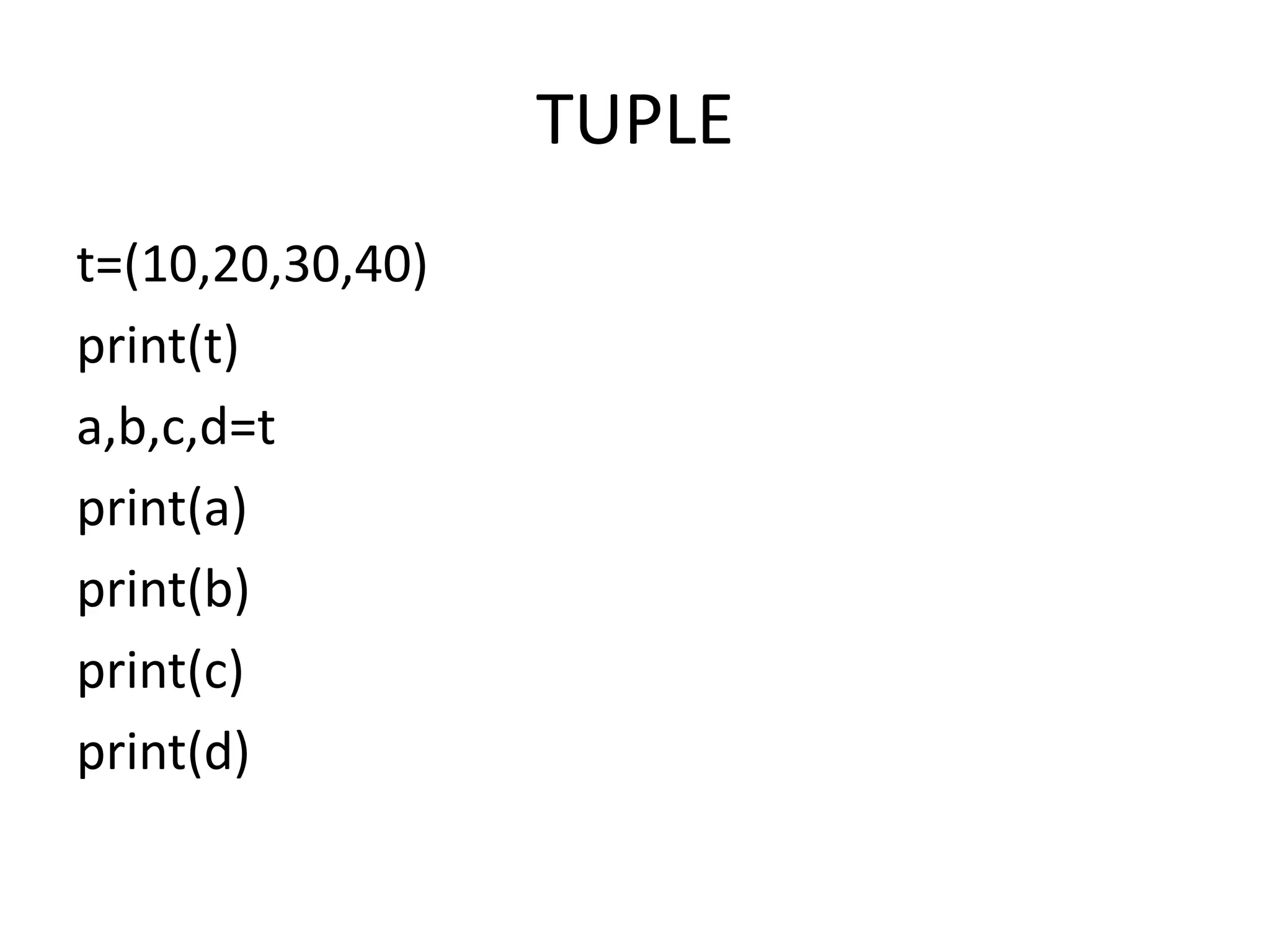Tuples can be created in Python in several ways such as using parentheses to contain a comma-separated list of values of different data types, creating a single element tuple by following a value with a comma, creating an empty tuple using parentheses or the tuple() function, nesting tuples within other tuples, slicing tuples to create new tuples, concatenating tuples using the + operator, and unpacking and packing tuples to extract or group values. Tuples are immutable and allow efficient lookup, storage, and retrieval of elements.




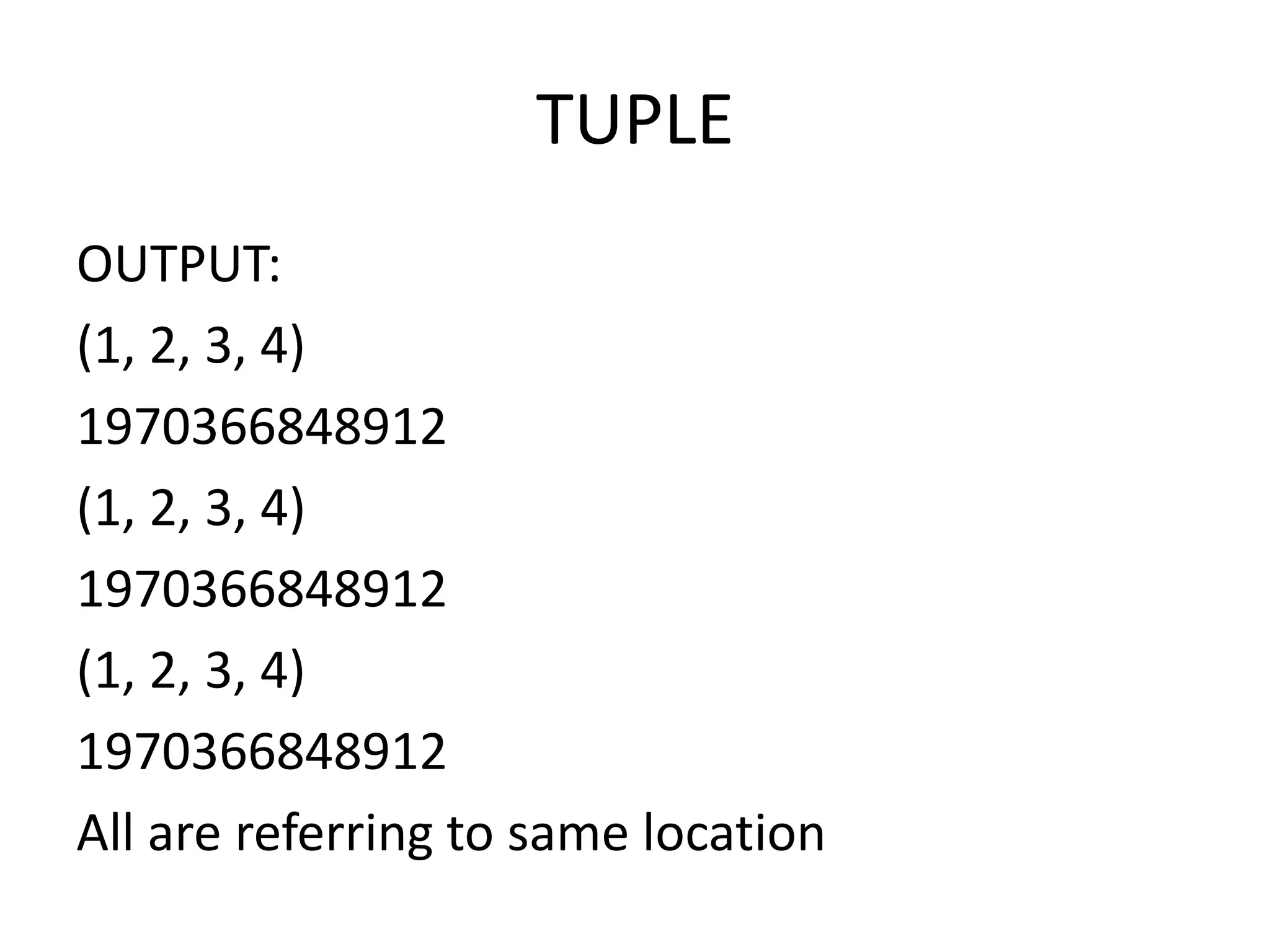
![TUPLE
6. Tuple can be created by using tuple() function
and passing existing list as a parameter.
l=[10,20,0,40]
print(l)
print(id(l))
t=tuple(l)
print(t)
print(id(t))](https://image.slidesharecdn.com/tuple-230813141006-59aed662/75/TUPLE-ppt-6-2048.jpg)
![TUPLE
OUTPUT:-
[10, 20, 0, 40]
1629910642048
(10, 20, 0, 40)
1627794510608
Both list and tuple are referring to different
locations.](https://image.slidesharecdn.com/tuple-230813141006-59aed662/75/TUPLE-ppt-7-2048.jpg)
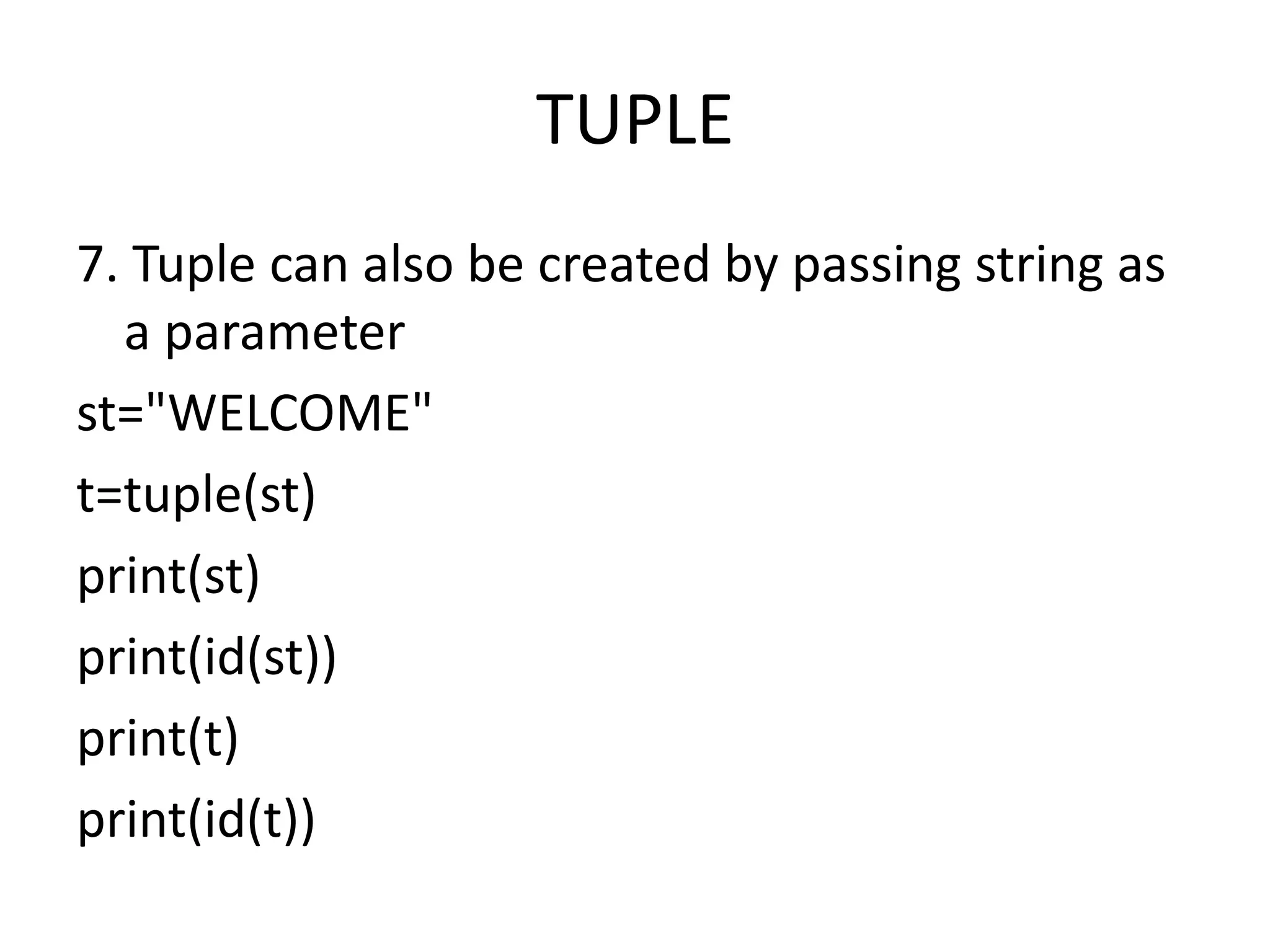

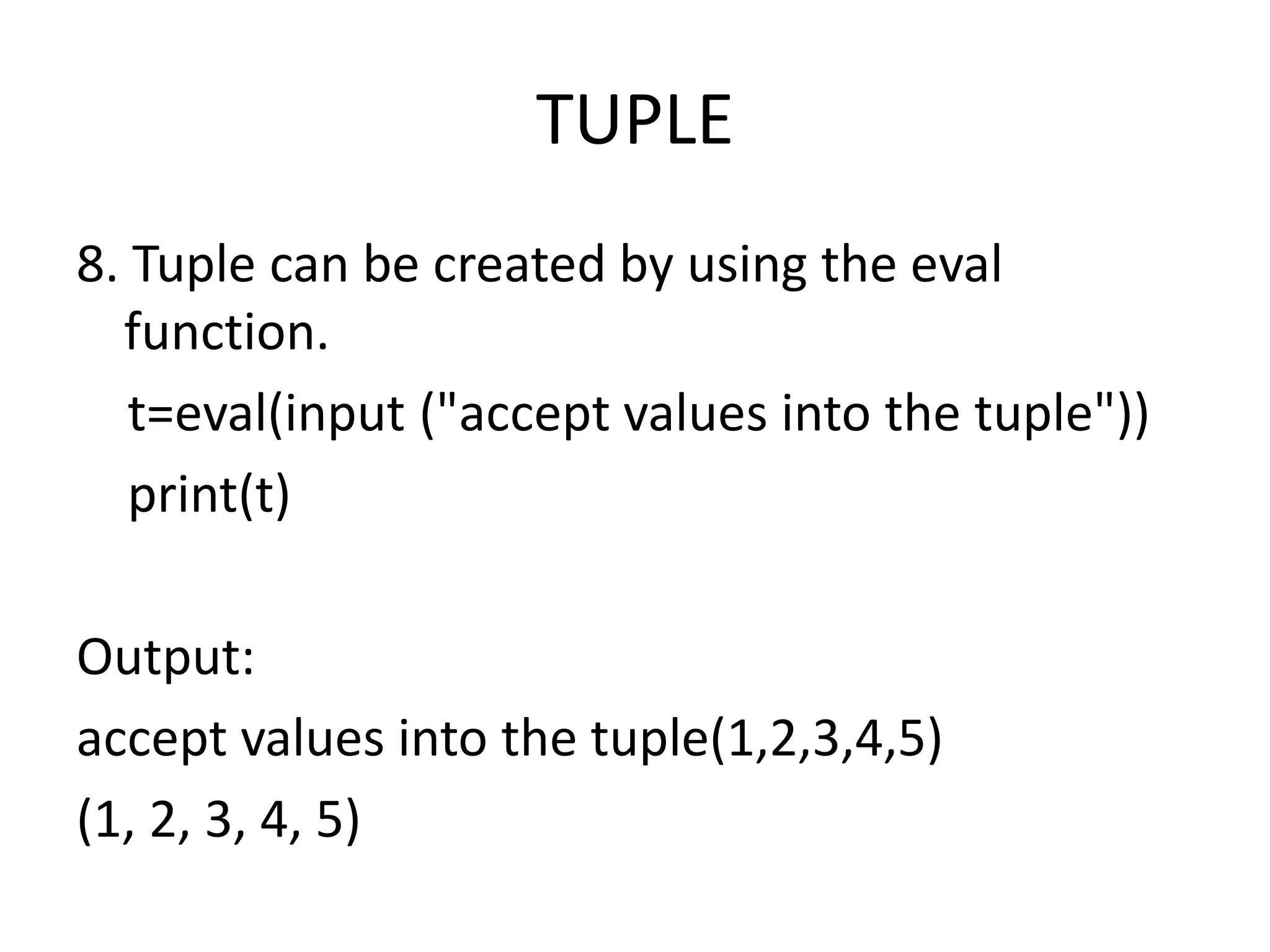

![TUPLE
10. Nested tuple can be created in the following
manner
T=(1,2,3,(4,5,6))
Print(T[3][-1])
OUTPUT:-
6](https://image.slidesharecdn.com/tuple-230813141006-59aed662/75/TUPLE-ppt-12-2048.jpg)
![TUPLE
11. List can be inside the nested tuple
T-(11,22,33,[1,2,3])
OUTPUT:-
(11, 22, 33,[1,2,3])
t=(11,22,33,[1,2,3])
print(t)
t[3][-1]=33
print(t)
OUTPUT:-
(11, 22, 33,[1,2,33])](https://image.slidesharecdn.com/tuple-230813141006-59aed662/75/TUPLE-ppt-13-2048.jpg)
![TUPLE
12. New tuple can be created by extracting the
slice from the existing tuple.
t=(11,22,33,44,55)
nt=t[2:20]
print(t)
print(nt)
Output:-
(11, 22, 33, 44, 55)
(33, 44, 55)](https://image.slidesharecdn.com/tuple-230813141006-59aed662/75/TUPLE-ppt-14-2048.jpg)

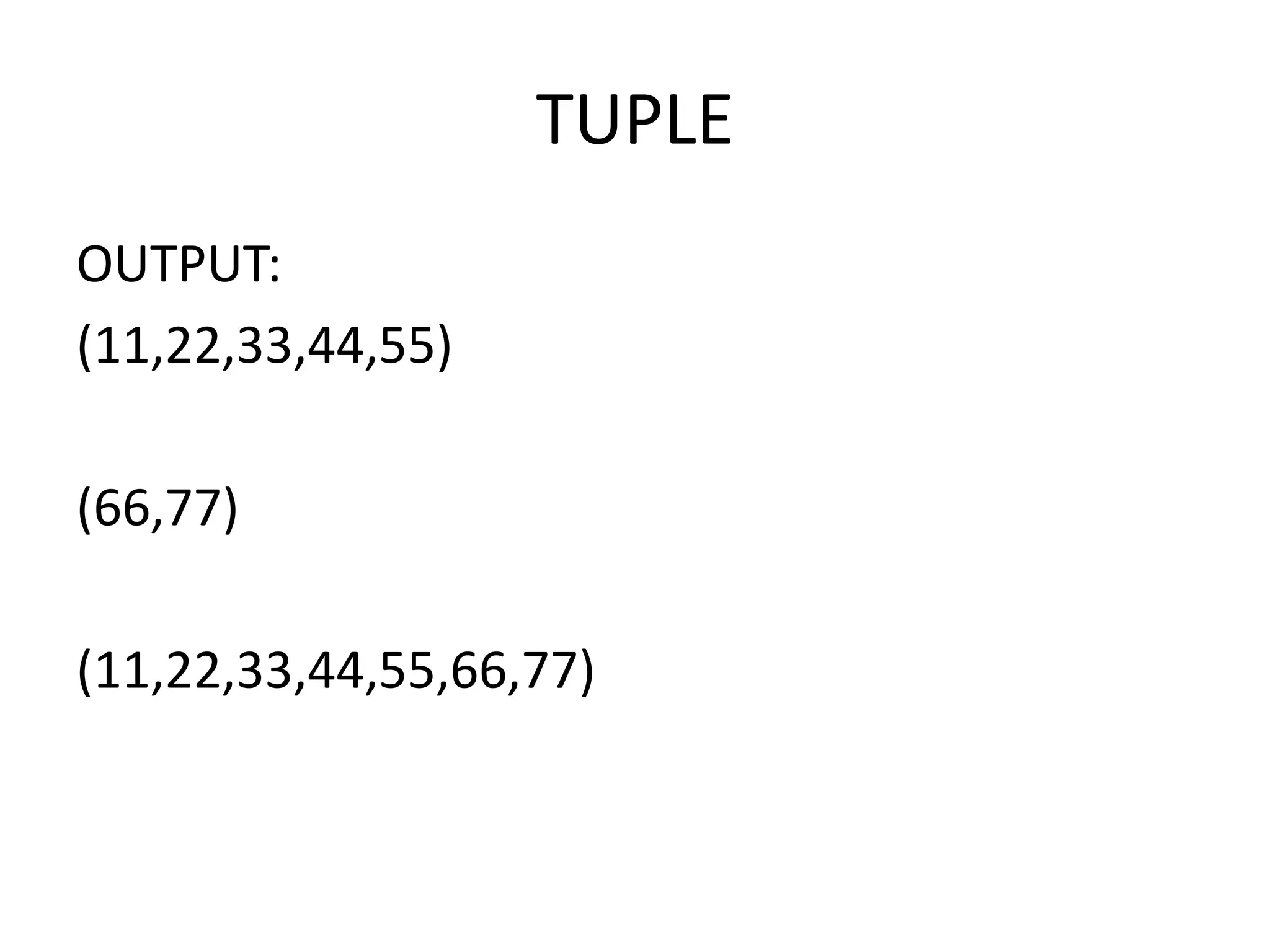
![TUPLE
Accessing an individual element can be done in
the following manner
T=(11,22,33,44,55)
Print(T[2])
Output:
33
In the case of tuple, individual item assignment
is not possible.
T[2]=222---is wrong.](https://image.slidesharecdn.com/tuple-230813141006-59aed662/75/TUPLE-ppt-17-2048.jpg)
![TUPLE
t=(11,22,33,[1,2,3])
print(t)
t[3][-1]=33
print(t)
OUTPUT:-
(11,22,33,[1,2,3])
(11,22,33,[1,2,33])](https://image.slidesharecdn.com/tuple-230813141006-59aed662/75/TUPLE-ppt-18-2048.jpg)
![TUPLE
MEMBERSHIP OPERATORS
t=(11,22,33,[55,66,77],[88,99],100)
print (55 in t)
print(22 in t)
print([55,66,77] in t)
print([55,66,777] in t)
print ([55,66,77] not in t)](https://image.slidesharecdn.com/tuple-230813141006-59aed662/75/TUPLE-ppt-19-2048.jpg)

![TUPLE
LOGICAL OPERATORS
t=(11,22,33,[55,66,77],[88,99],100)
print(t[0] and 100)
print (0 or t[3])
print(t and 0)](https://image.slidesharecdn.com/tuple-230813141006-59aed662/75/TUPLE-ppt-21-2048.jpg)
![TUPLE
OUTPUT:-
100
[55, 66, 77]
0](https://image.slidesharecdn.com/tuple-230813141006-59aed662/75/TUPLE-ppt-22-2048.jpg)
![TUPLE
Tuple slices:-
t=(1,"aman",20,12.5,89.5,"x",[10,23,45],89)
print(t[2:5:1])
print(t[0: :])
print(t[6: :1])
print(t[ :len(t):])
print(t[ :(len(t)+20):])
print(t[0:34:1])
print(t[0:56:1])](https://image.slidesharecdn.com/tuple-230813141006-59aed662/75/TUPLE-ppt-23-2048.jpg)
![TUPLE
• OUTPUT:-
(20, 12.5, 89.5)
(1, 'aman', 20, 12.5, 89.5, 'x', [10, 23, 45], 89)
([10, 23, 45], 89)
(1, 'aman', 20, 12.5, 89.5, 'x', [10, 23, 45], 89)
(1, 'aman', 20, 12.5, 89.5, 'x', [10, 23, 45], 89)
(1, 'aman', 20, 12.5, 89.5, 'x', [10, 23, 45], 89)
(1, 'aman', 20, 12.5, 89.5, 'x', [10, 23, 45], 89)](https://image.slidesharecdn.com/tuple-230813141006-59aed662/75/TUPLE-ppt-24-2048.jpg)

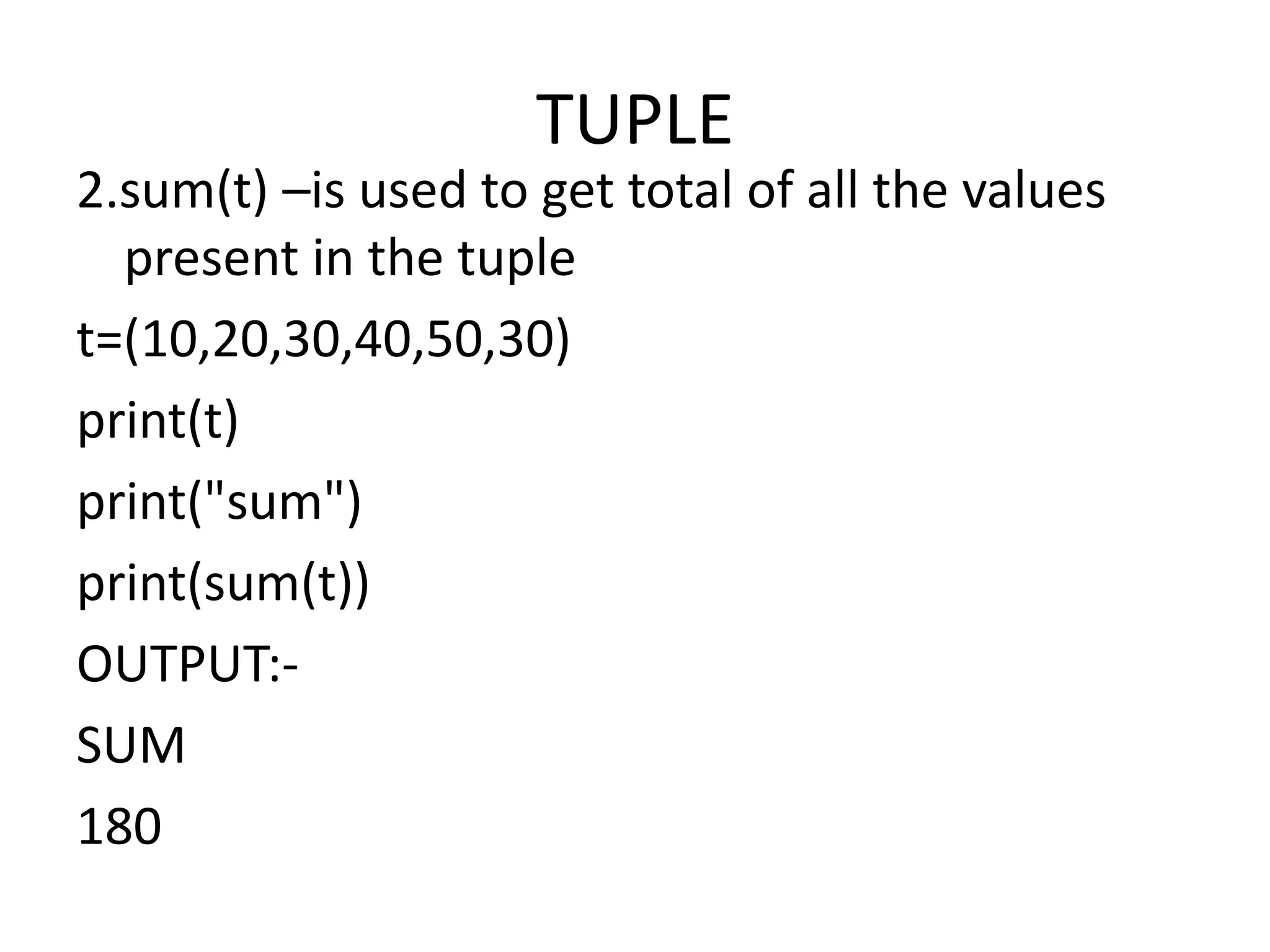
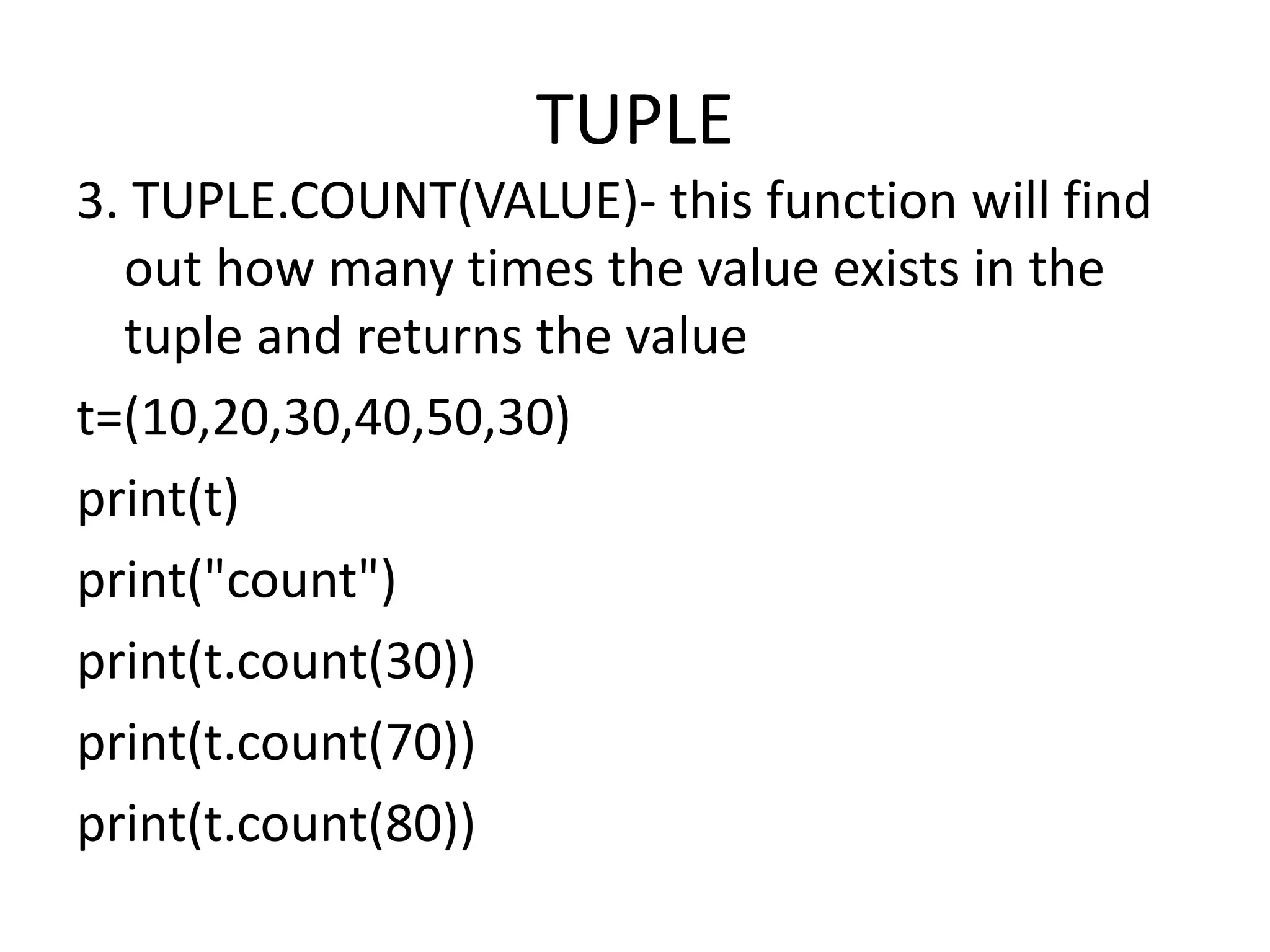

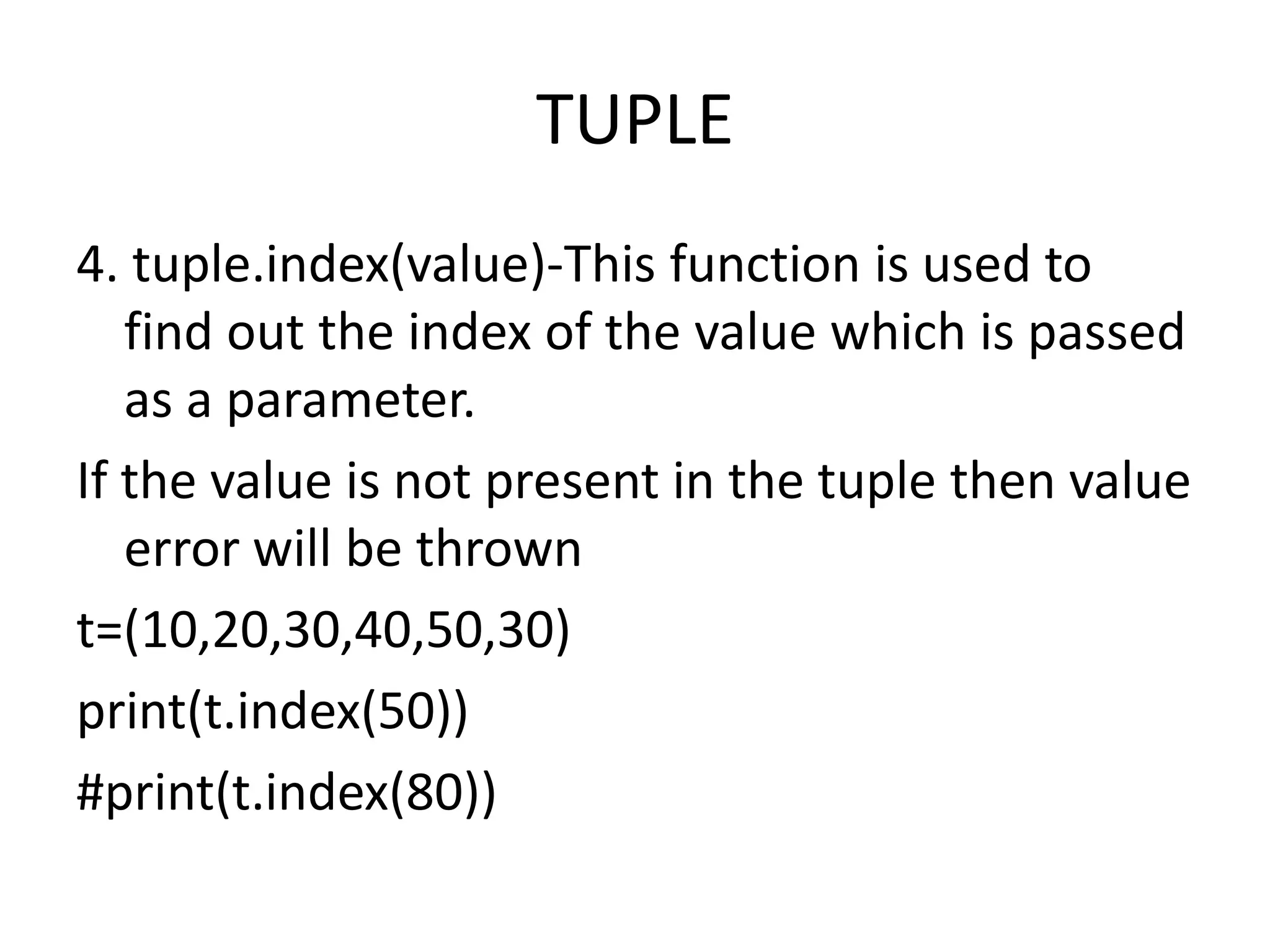





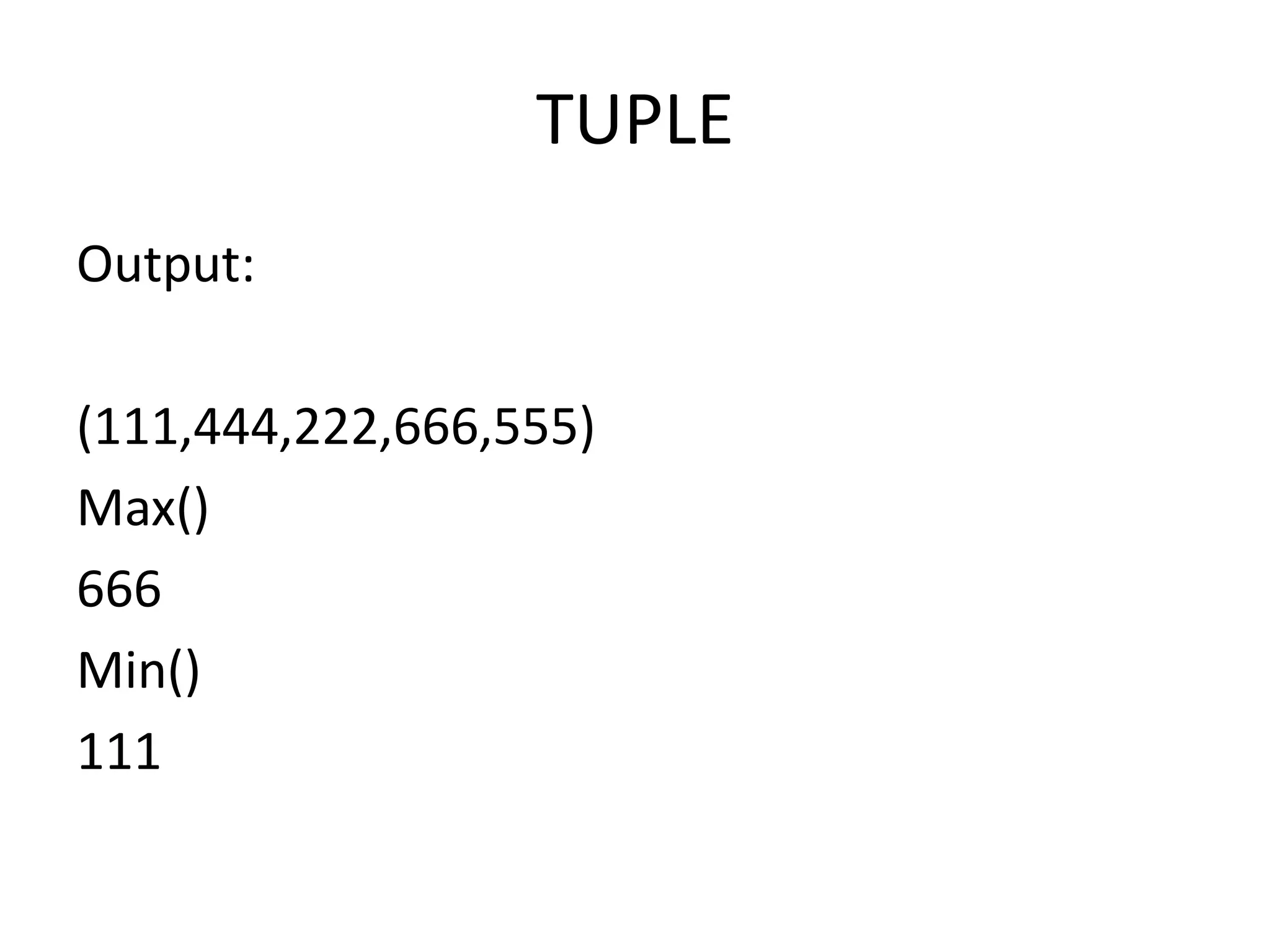

![TUPLE
OUTPUT
(10, 30, 30, 60, 50, 20)
using sorted()
[10, 20, 30, 30, 50, 60]
(10, 30, 30, 60, 50, 20)](https://image.slidesharecdn.com/tuple-230813141006-59aed662/75/TUPLE-ppt-37-2048.jpg)

